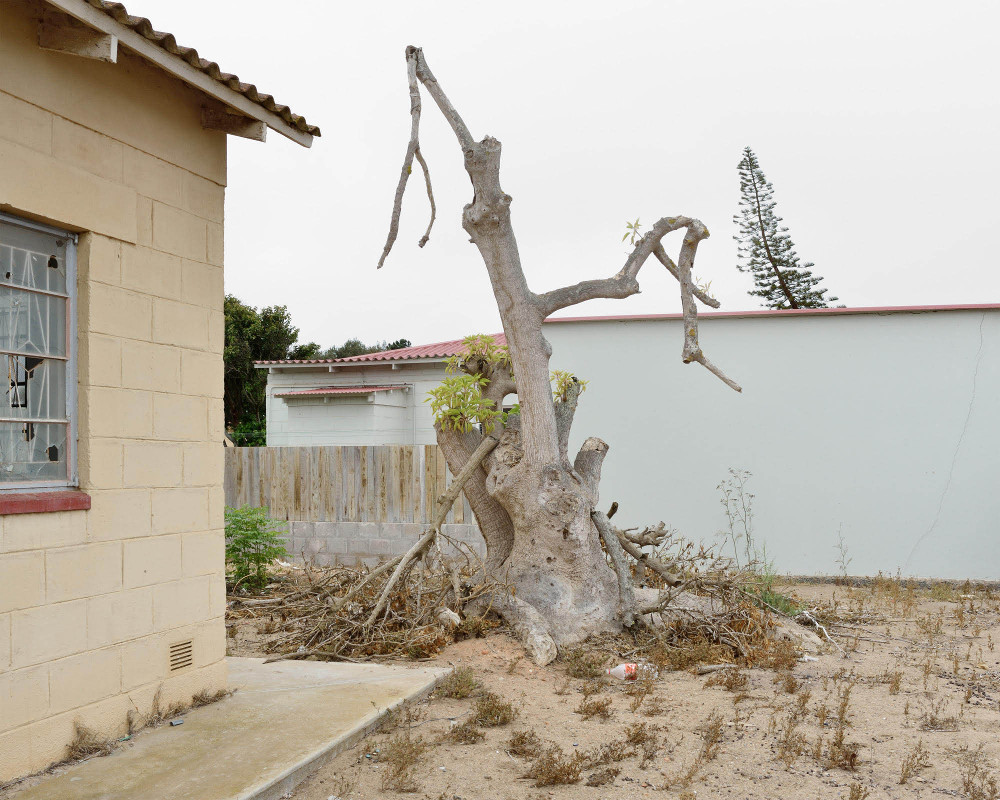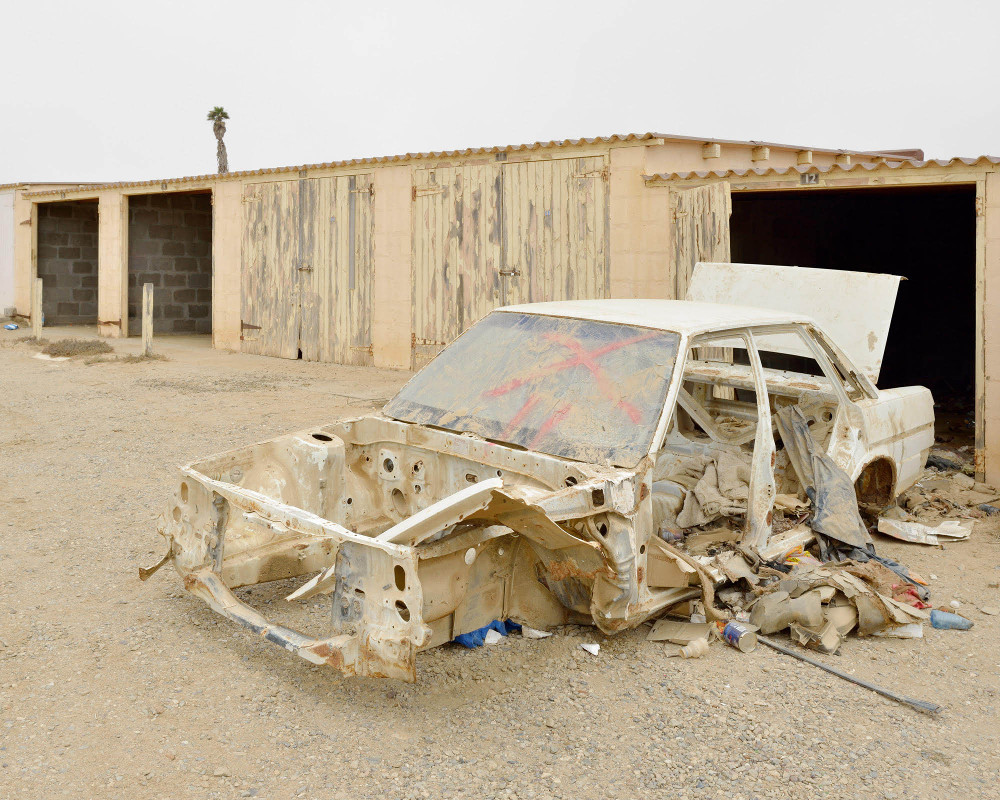Reclaiming: People lived
Dillon Marsh’s photographs are devoid of humans, yet the presence of humans is palpable in each frame.
The Cape Town-based photographer, who says his work is concerned with “various aspects of how humans interact with the world around them”, has a knack for concision in conveying the effect human habitation has had on specific locales.
Diamonds Aren’t Forever, a series that looks at the aftermath of diamond mining in the twin West Coast towns of Alexander Bay (South Africa) and Oranjemund (Namibia), conveys so much about the social and physical engineering that accompanies mining by looking at the vacant spaces created by its aftermath.
This approach is recurrent through much of Marsh’s work, which pierces through the idyll of suburban and rural South African life: disguised cellphone towers in their environs, a river as it runs through different neighbourhoods or abandoned farm houses against their parched rural landscapes.

[Diamonds Aren’t Forever, Dillon Marsh]
Travelling to Namibia’s border with South Africa to photograph towns that had been sealed off to the public, Marsh produces photographs that can be split into two distinct wholes: the empty, forlorn houses of Oranjemund and the windswept garages of Alexander Bay, complete with the decaying carcasses of auto body shells.
In both sets of images, the harsh, sandy terrain, the broken windows and the wilting fauna create the sense of the elements coming not to reclaim human inventions but the vainglorious egos of their creators.
“A lot of the towns had these recreational places as well that had been instituted by the mine,” says Marsh. “So there were yacht clubs, golf courses and things like that that the mine had provided for the residents of the town but a lot of these have become defunct basically. I look at how people interact with the environment and how the environment interacts with man-made things as well.”
Marsh works in a mode he refers to as typology, which gives his oeuvre a conceptual cohesiveness that perhaps betrays an activism inherent in his work, an activism that Marsh is not willing to admit to in conversation. For What It’s Worth, for example, uses landscape and computer-generated imagery to compare the output of a particular mining house or site with the environmental impact of excavating a particular mineral.
It is with diamond mining that these incongruences hit at you the most. If compressed into a dense mass, the 14.5-million carats (extractedout of Kimberley’s Big Hole) would amount to probably a metre in diameter, Marsh says.
“With each various element there was a different outcome,” says Marsh, who has done similar exercises with gold, copper and platinum and its associated metals. “With the copper mines, it looks like there was a very impressive amount that was taken out of each mine. When it came to diamonds, there were incredibly small amounts that were produced out of these vast open-mine pits.”
Marsh’s work, be it depicting the crumbling edifices of farmhand lodgings or the dying-but-still-standing tree stumps of the Cape Flats, is rendered even more poignant by the lack of human figures.

[Diamonds Aren’t Forever, Dillon Marsh]
Asked whether he is consciously sidestepping the various problems associated with his white gaze, the Stellenbosch-educated Marsh says he is merely creating a space for the subtlety of his images to shine.
“If I were to include people directly in the images, the story would become just about the people in the photographs and not about the relationship between the people that live there and the environment, which is the theme that I am specifically looking at,” he says, before adding: “It is definitely something I am trying to delicately sidestep, but I am not trying to draw attention to the fact that there are no humans.”
In an online interview, Marsh reveals that he grew up on a farm near Stellenbosch, which is where his acute awareness of the landscape probably emerges from.
Photography, though, came from his fatigue with realistic painting at school. “Although I enjoyed it [painting], it was quite laborious trying to copy a photograph into a painting,” he says. “I realised that I far more enjoyed the process of taking photographs and exploring the world around me.”
Diamonds Aren’t Forever is Marsh’s fifth solo exhibition and his second with Gallery MOMO. He has previously exhibited with the AVA Gallery, blank projects and Brundyn+ in Cape Town and taken part in group shows such as Africa Reframed in Copenhagen in June 2016 and Africa: Architecture, Culture and Identity at the Louisiana Museum of Modern Art in Denmark in 2015.
Diamonds Aren’t Forever runs until August 19 at Gallery MOMO, Cape Town